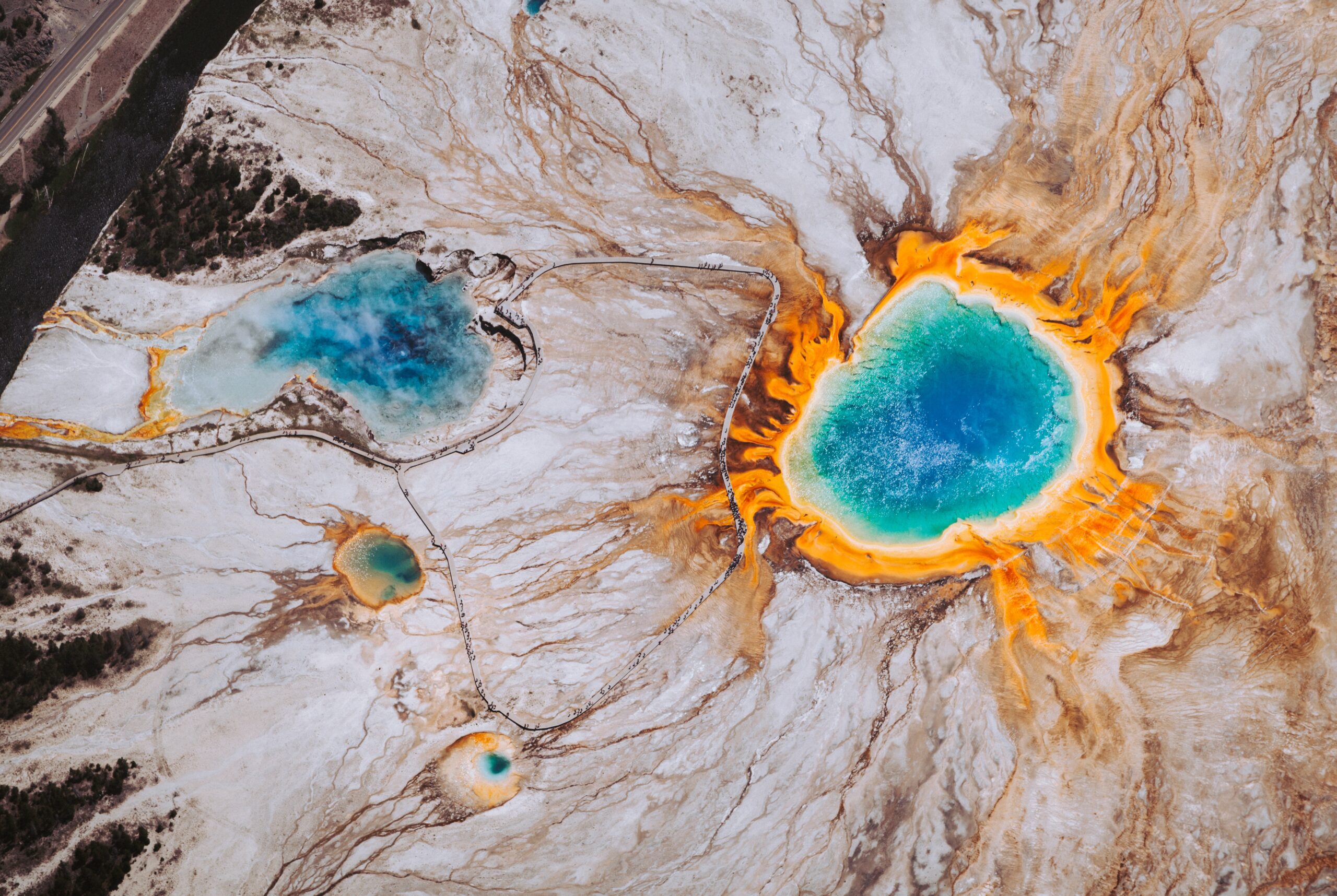This article was originally published in the Powell Tribune.
Last week, my wife and I felt like the last people left on Earth at the north entrance of an empty Yellowstone National Park. Never had we seen the famed 1903 Roosevelt Arch devoid of anyone, even in the heart of the snowiest winter. An inscription on the arch says, “For the benefit and enjoyment of the people.” But there were no people.
While the pandemic of our lifetime has forced the closure of Yellowstone, the fight against the coronavirus has a direct and surprising connection to the world’s first national park. A standard procedure used to test for Covid-19 relies on a unique enzyme discovered in Yellowstone. It’s a story that illustrates one of the many wonders of Yellowstone—and provides a clue as to how we might better sustain our national parks in the future.
More than just a pretty picture, the yellow and orange bands around Yellowstone’s Grand Prismatic Hot Springs are thermophiles, a type of heat-loving bacteria. In 1966, microbiologist Thomas Brock discovered a particular thermophile called thermus aquaticus in a Yellowstone hot spring that would prove invaluable to science.
An enzyme from the heat-thriving thermophile unlocked the key to research that enabled the rapid replication of strands of DNA. This process, called polymerase chain reaction (PCR), amplifies strands of DNA and is now used for a variety of purposes, including fingerprint analysis to identify criminals, cancer research, detection of genetic diseases, and the early detection of infectious diseases like Covid-19. According to National Geographic, the PCR process enabled by the Yellowstone enzyme is “the vital backbone” of most of today’s coronavirus tests.
One might naturally think that with its vital link to PCR, Yellowstone is poised to receive a financial windfall from all those Covid-19 tests that depend on the discovery from inside its gates. And it couldn’t come at a better time as the park’s budget will likely take a multimillion-dollar hit this year due to reduced entry and concessionaire fee revenue. Yet, unfortunately, the park will not benefit.
The discovery of thermus aquaticus occurred decades before the park had the authority to benefit from such discoveries. The commercial success of PCR led the park to advocate for permission to enter into benefits-sharing agreements that would enable the park to benefit from commercial use of a discovery or invention resulting from research in the park. In 1997, Yellowstone became the first park to enter into such an agreement with a commercial research firm studying other microbes in the park’s thermal pools. As then-Yellowstone superintendent Mike Finley recounted to me, “I was the first park manager to initiate benefits-sharing and the first to get sued.”
Opponents immediately challenged the agreement as an unwarranted commercial use of park resources even though the microbes collected in the park remained in federal ownership and were never sold. Bioprospecting bears little resemblance to what many equate to traditional hard rock mining. The process of removing microbes for analysis might involve little more than gently extracting a few tablespoons of liquid or a tiny swatch from a microbial mat.
After completion of a lengthy environmental review, national parks were granted the authority to enter into benefits-sharing agreements. In announcing the change in 2010, National Park Service Director Jonathan Jarvis noted that such agreements are “not about commercializing the parks,” but rather are “about the public receiving some benefit from commercial projects that result from analysis of samples collected in national parks.”
It is easy to envision how there might have been a silver lining for our parks during this pandemic if Yellowstone had such agreements in place at the time thermus aquaticus was discovered. But there is hope for similar discoveries in the future.
Today, nearly one-quarter of the research permits issued by Yellowstone go to scientists looking for thermophiles in the park’s unique thermal pools. Park officials even envision Yellowstone microbes could one day help us not just to suppress pandemics, but also to degrade plastics or hydrocarbons. That’s a lot of commercial potential that could provide financial returns to help sustain the future of our national parks.
Future benefits-sharing agreements in our national parks just might strike the appropriate balance between ground-breaking scientific research and new and creative market-based solutions to preserve our greatest public lands. Too bad it takes a pandemic to remind us.




